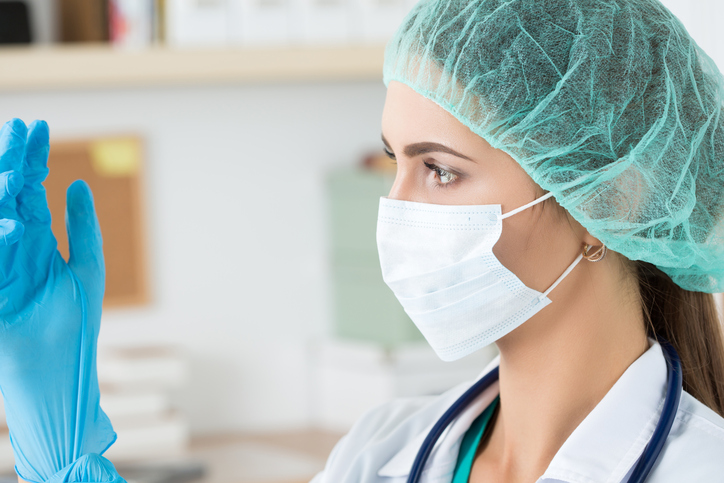When entering any operating room, it’s important for surgeons to wear Protective Personal Equipment, also known as PPE. Gloves, surgical masks, aprons, long sleeved gowns, eye goggles, face visors and respirator masks all come under the umbrella term of PPE. It’s vitally important to operate under controlled conditions in any medical environment, which is why wearing PPE is strictly enforced. Want to know about how to keep yourself protected in the operating room? Read on for more.
Why is PPE Used?
Every operating room should be kept as sanitary as possible. PPE is used in healthcare settings to create a barrier between the healthcare workers and the patient. Most importantly, it stops the spreading of infections and diseases. The choice of PPE used should be entirely dependant on the risks assessment carried out before an operation. This includes whether the surgeon will be exposed to body fluids, blood or infectious agents.
It’s important to note that visitors of the patient may also be required to wear such equipment, particularly if they are providing patient care.
Putting on PPE
Before putting on PPE, keep in mind that you’re likely to be in the room for some time. The warm environment might cause discomfort during the operation, so be sure to wear light layers and stay hydrated. You should also secure prescription glasses to your face if you need them. Furthermore, always wash your hands before handling any PPE. This should be done with an alcohol-based solution.
Protective personal equipment must always be put on in a separate room to the operating room. This room should be exceptionally clean at all times. Once you’re wearing all the necessary PPE, make sure that long hair is tied back and ensure that all personal items, such as jewelry, have been removed.
Your surgical mask should be the last step of putting on your PPE. Surgeons performing cosmetic surgery such as a tummy tuck or breast implants are required to wear such a mask, as are many other healthcare providers. These masks provide barrier protection to the wearer from splashes and droplets around the respiratory tract. Upon finishing the surgery, these masks should be discarded and not left attached around the wearer’s neck.
Removing PPE
As expected, removing PPE can often be the most challenging aspect because you’ll want to ensure you’re not exposed to any potentially harmful areas that may have been contaminated. Careful attention is required throughout this process. Removal should take place in another separate area away from the operating room – and away from where you first put in on! This PPE area should not be used for any other purpose.
A leakproof container should be available for equipment disposal in this room. There should also be disinfectant wipes and an alcohol-based rub to disinfect any visible contamination on your PPE. Disinfect your gloves with the alcohol rub and allow them to dry before removing them.
Throughout the entire removal process, there will be a trained observer on hand to ensure that everything is being done correctly. This person will have a checklist for every step, watching for any breaches of protocol. The observer must also undergo all PPE removal procedures once they leave the room, as they may be contaminated.
The Importance of Keeping Yourself Protected
In some cases, PPE is required outside of the operating room, such as in certain wards where patients may be at a higher risk of contaminating those around them. If PPE is worn and removed correctly, it can successfully minimize the risk of any healthcare workers being exposed to infections.


